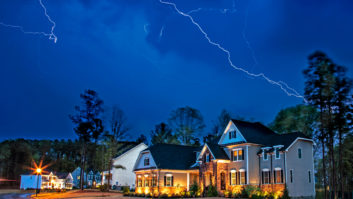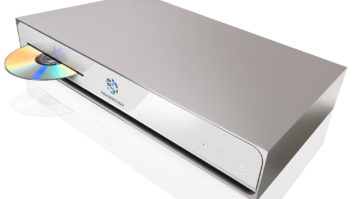As California residents truly learn the meaning of what it is to be “in the black,” companies in the residential systems market nationwide are exploring ways in which to properly address energy management issues.
Over one year ago, it became apparent that the Golden State was headed for an energy crisis, largely a result of poorly executed deregulation laws. In January, Southern California Edison and Pacific Gas and Electric announced that they might be forced to declare bankruptcy if the government didn’t intervene quickly. Residents and businesses–especially in Northern California–have since had to endure rolling blackouts and skyrocketing electricity bills.
Officials across the U.S. are paying close attention to California’s present dilemma, in an effort to prevent what is happening in the West. A close examination of the issue couldn’t happen soon enough; residents in almost every state in the country have experienced an increase in the cost of electricity.
These circumstances, as negative as they may seem, create a prime opportunity for companies in the residential systems business, according to Adam Marsh, co-founder and chief strategy officer of Coactive Networks. “If anything, I would have to say that it has helped in the sense that it has highlighted the need for consumers to have increased information and control with regard to their energy output. In a changing energy market, it is essential for customers to have access to feedback–precise and timely information–as well as the control that allows them to make effective energy decisions and act on them. Giving consumers the tools for responsible decision-making and action will ultimately curb costs.”
The company’s Coactive Connector Internet gateway technology aims to do just that. Without having to run new wiring into the home, the product enables residents to raise and lower thermostat settings, engage or disengage the pool pump, and preset energy consumption levels through a Web interface. “There are any number of possibilities for helping to conserve energy, especially since we know it takes only a small reduction across many households during peak periods to avert the kinds of crises we have seen,” Marsh noted. “Because Coactive’s gateway goes into hundreds and thousands of homes–entire energy service areas–its deployment and use can have a huge energy conservation effect.”
Acknowledging that heating, air conditioning, hot water heating systems and lighting consume the most energy, manufacturers like Coactive and SmartAMERICA–the makers of the HomeBoxx and ThinkBoxx residential gateway products–also provide residents with the ability to curb usage during peak hours. “The Coactive Connector residential gateway can be programmed or operated remotely to address this problem in a number of ways,” Marsh explained. “With usage data coming in real-time on an area wide basis, energy providers can foresee a problem and take action to avert it. Or, they can set up tiered pricing agreements while giving their customers the tools to stay within lower cost ranges. Incentive programs like these are very effective, but again, only if the consumer has the tools to participate.”
Modeled after old-style phone plans, these incentive programs offered by many energy providers charge residents a “time of use” rate. Under this method, consumers are typically billed a higher price for daytime energy usage, and a lower fee for the energy they use at night. A number of the residential gateways that are on the market will signal the user when the rates change.
“If you are billed on a flat rate, you are going to do some things with your home control system that will save energy in general. For example, every time you leave the house, as your arm the security system you may have it turn thethermostat back and turn off the hot water heater,” Jeff Vaughan, director of business development at SmartAMERICA, illustrated. “If you have a time of use rate, during the day as the rate gets more expensive, you might automatically turn off certain appliances or adjust the thermostat, and then turn those back as the rate gets cheaper. The technology would work like a timer control in that case.”
Consumers billed under “real-time” pricing would program their systems differently. “You would have automation in your home that allows you to change things as you enter a more expensive period of time,” Vaughan explained. “As you go from a low rate to a medium rate, you might turn the hot water heater off and turn the thermostat down five degrees. As you enter a very high rate period, you might turn the pool pump off, leave the hot water heater off and turn the thermostat back ten degrees. This would happen automatically.” Like Coactive and SmartAMERICA, software technology developed by HomeSeer Technologies (formerly Keware) enables users to access their home systems from the residence or remotely, via the web. “We realized very early on that energy conservation was going to be a major selling point of our software,” said Karen Franz, director of sales and marketing at HomeSeer. “It was immediately clear that electrical lighting–and to a lesser extent, appliances–and HVAC were the primary concerns of our customers. Of course, some also wanted security system interfaces, infrared device control, water systems control and telephony applications. The major concern of our customers, however, continues to be electricity and fuel control conservation.”
Franz noted that the varied needs for residents across the country presents a challenge to software developers like HomeSeer. “Every customer is different,” she pointed out. “The energy conservation needs of a person living in New Hampshire are very different than a person living in Louisiana. Comfortable energy conservation may be different for a single guy than a family of six. There is no ‘one size fits all’ solution. In order to succeed, systems must be customizable and flexible for the changing needs of the customer.” In addition to the features it offers, HomeSeer allows its users to customize the HomeSeer software, and then post the altered software scripts on the company’s website.
“In the past, particularly in North America, energy management was not as much of a concern. We were perhaps more concerned with equipment management and control,” observed Brad Hartnett, business development manager at Invensys Home Control Systems. “Since the crisis, there has been a little more emphasis placed on energy management above other services, such as equipment management and security, and comfort.”
Hartnett believes that this trend will increase over the next several years. “I feel that this summer there will probably be a spate of projects that are launched by various utilities,” he said. “The initial phase would involve multi party vendors coming to the table to work on these pilot projects and learn from them. I really think that it will be a learning experience this year and next year, with a view to delivering mass-market solutions. I think the technology is available for some of these pilots to be successful. I don’t think any one vendor can really supply an end-to-end solution, however. It’s going to require partnerships–often complex–between builders, utilities, technology providers like Invensys, and other service providers.”
As the cost of electricity continues to climb, so, too, will the demand for these types of solutions. “Many people probably think that energy conservation in residential systems is a convenience,” Franz said. “I think that as time goes on, we will recognize that it is a necessity and a fact of modern life.”
–Carolyn Heinze is a freelance writer in Toronto, Canada.






